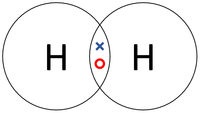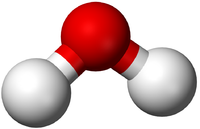Difference between revisions of "Single Bond"
(Created page with "==Key Stage 4== ===Meaning=== A '''single bond''' is a chemical bond in which only one electron is shared or transferred from the Outer Shell|outer she...") |
(→Examples) |
||
| Line 12: | Line 12: | ||
|[[File:Chlorine-Chlorine.png|center|200px]] | |[[File:Chlorine-Chlorine.png|center|200px]] | ||
|[[File:HydrogenDotandCrossDiagram.png|center|200px]] | |[[File:HydrogenDotandCrossDiagram.png|center|200px]] | ||
| − | |[[File: | + | |[[File:BallandStickWater.png|center|200px]] |
|- | |- | ||
| style="height:20px; width:200px; text-align:center;" |A '''single bond''' between two [[Chlorine]] [[atom]]s. | | style="height:20px; width:200px; text-align:center;" |A '''single bond''' between two [[Chlorine]] [[atom]]s. | ||
Revision as of 13:18, 14 January 2019
Key Stage 4
Meaning
A single bond is a chemical bond in which only one electron is shared or transferred from the outer shell.
About Single Bonds
- In covalent bonds a single bond means one electron from the outer shell of an atom is shared.
- In ionic bonds a single bond means one of the atoms has gained or lost just one electron that has been transferred to another element.
Examples
| A single bond between two Chlorine atoms. | The two Hydrogen atoms in a Hydrogen molecule each share only one electron in a single bond. | The Oxygen in Water shares one electron with each Hydrogen atom forming two single bonds. |


